What Wood Is Best For Outdoor Furniture
Navigating the realm of outdoor furniture can often feel like trekking through a dense forest of options, each with its unique charm and challenges.
At Farrell’s Lawn and Garden Center, we understand the importance of not just selecting furniture but choosing companions for your outdoor adventures that are both enduring and visually appealing.
Whether you’re aiming for a rustic retreat or a sleek outdoor haven, join us as we chart a path to finding your perfect match in the world of wood!
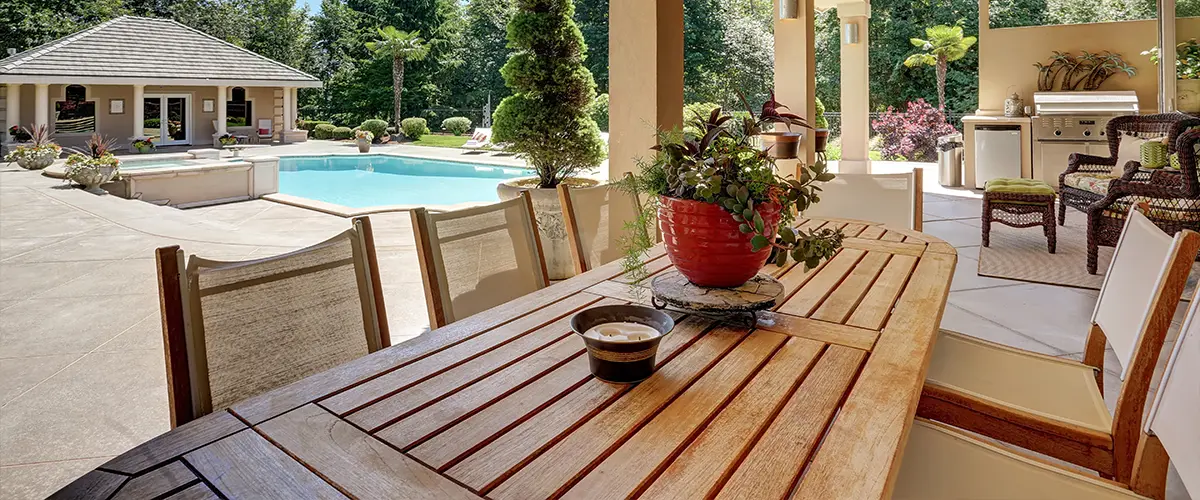
Types of Wood for Outdoor Furniture
Teak
Teak stands out as the premier choice for outdoor wood furniture. Its natural oils and dense grain make it highly resistant to water, rot, and insects, ensuring that teak outdoor furniture can withstand harsh weather conditions without losing its beauty or integrity.
This durability makes teak an ideal material for garden furniture and other outdoor spaces where quality and longevity are key.
People often choose teak for its aesthetic appeal as well. Over time, it develops a stunning silver-gray patina if left untreated, adding a touch of elegance to any outdoor setting.
Despite its higher price point compared to other woods like acacia or cedar, many find the investment in teak outdoor furniture worthwhile for its unmatched durability and low maintenance needs.
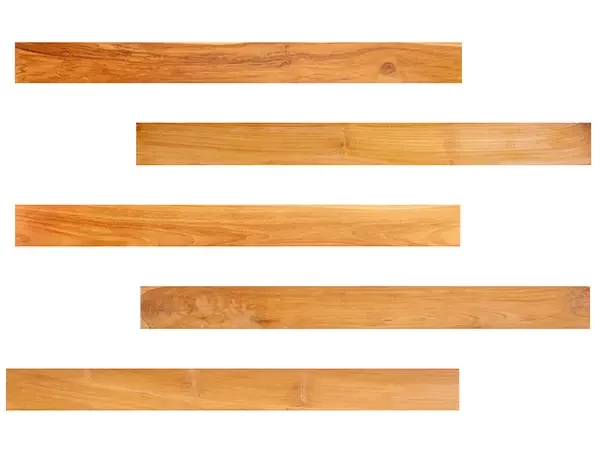
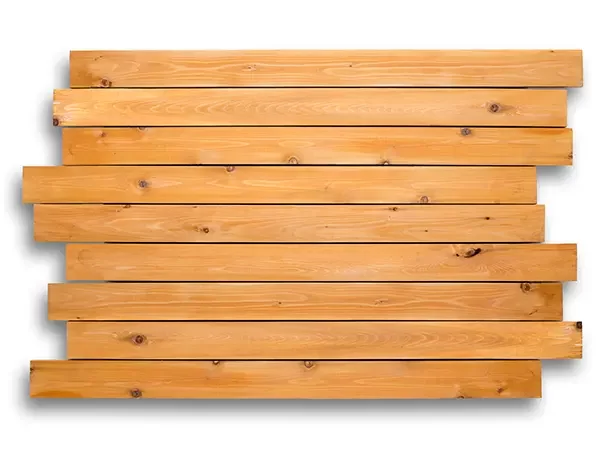
Cedar
Cedar furniture stands out for its impressive durability when used outdoors. This wood naturally repels insects and resists decay, making it a top choice for patio sets. Its distinct aroma adds a pleasant touch to outdoor spaces.
Cedar’s ability to withstand moisture without warping or developing mold means it can endure through various seasons. Its lighter weight compared to other outdoor woods makes moving cedar benches or tables an easy task.
Over time, cedar develops a beautiful silver-gray patina if left untreated, adding character to your garden or patio area with minimal maintenance required. For those who prefer the original color, periodic treatment with wood oil preserves its vibrant tone.
Eucalyptus
Moving from cedar, another excellent option for outdoor furniture is eucalyptus wood. Known for its durability, eucalyptus stands up well to the elements. This type of wood naturally repels moisture, making it less likely to rot or develop mold.
Its tight grain and hard surface can endure harsh weather conditions and repel pests.
Eucalyptus trees grow quickly, which makes this wood a more sustainable and affordable choice compared to teak.
Furniture made from eucalyptus offers a strong structure and an attractive appearance with its rich tones that fade into a soft gray if left untreated.
To maintain its vibrant color and extend its life, treat eucalyptus furniture with a UV-resistant sealer annually. This step ensures your patio pieces remain beautiful while withstanding years of outdoor use.
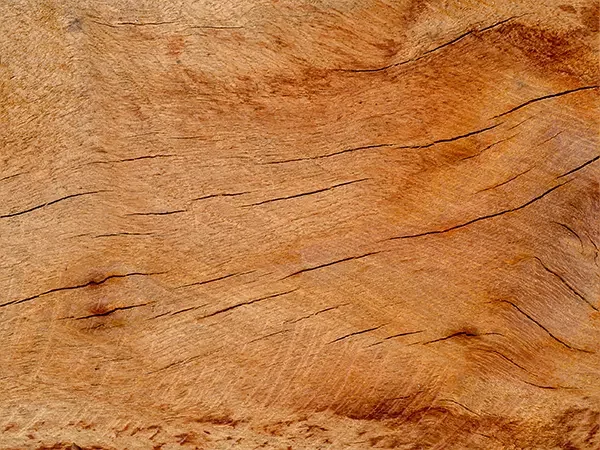
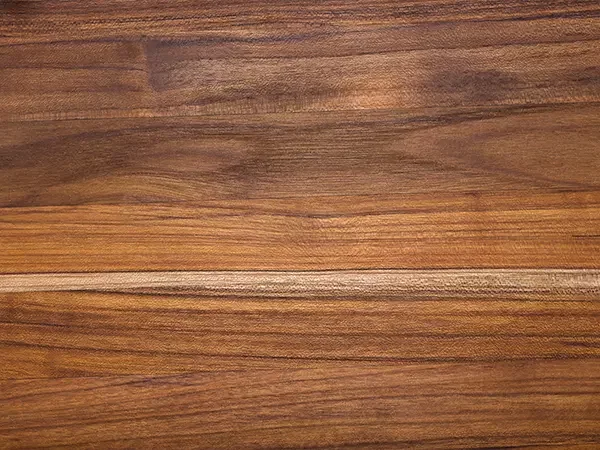
Acacia
Acacia wood is a popular choice for outdoor furniture due to its durability and affordability. This hardwood is naturally resistant to rot, making it ideal for withstanding the elements.
It also has a beautiful natural grain that gives outdoor furniture a warm and inviting look. Acacia is easy to work with, making it versatile for crafting different styles of furniture, from traditional to modern.
Its natural oils provide some level of protection against insects and decay, but it’s still important to treat acacia furniture with an appropriate sealant or oil to ensure longevity.
When considering acacia for your outdoor furniture, keep in mind that regular maintenance such as cleaning and resealing will help preserve its appearance and structural integrity over time.
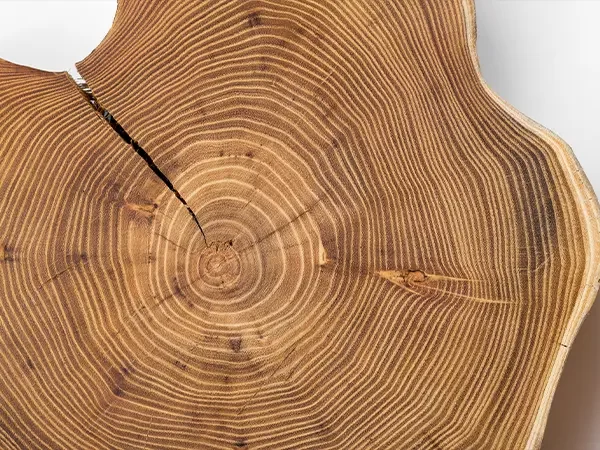
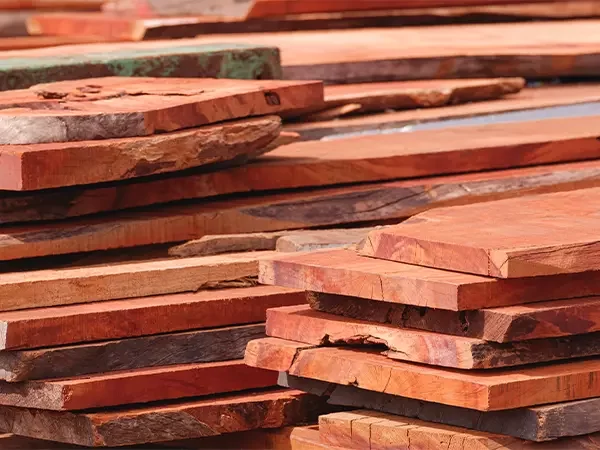
Redwood
Redwood is a popular choice for outdoor furniture due to its natural resistance to decay, making it ideal for withstanding the elements. The wood’s rich color and natural beauty add an attractive aesthetic to any outdoor space.
Redwood is also known for being durable and long-lasting, providing a sturdy option for furniture that will endure frequent use and weather exposure.
Redwood contains natural oils that help protect it from insects and decay, reducing the need for chemical treatments or sealants. This makes redwood an eco-friendly choice that requires minimal maintenance over time.
Pros and Cons of Each Type of Wood
| Wood Type | Pros | Cons |
|---|---|---|
| Teak | Highly durable, natural oils resist decay, requires minimal upkeep | Expensive, heavy |
| Cedar | Lightweight, naturally resists rot and insects, pleasant aroma | Softer wood, can dent and scratch easily |
| Eucalyptus | Eco-friendly, strong durability, good decay resistance | Requires regular maintenance to retain color and prevent splitting |
| Acacia | Resistant to the elements, sustainable, cost-effective | Needs regular oiling to maintain appearance, variable quality |
| Black Locust | Extremely hard and durable, naturally rot-resistant, beautiful grain | Can be difficult to work with due to hardness, limited availability |
| Redwood | Natural beauty, resists shrinkage, warping, and decay | Needs sealant for color preservation, more expensive than other softwoods |
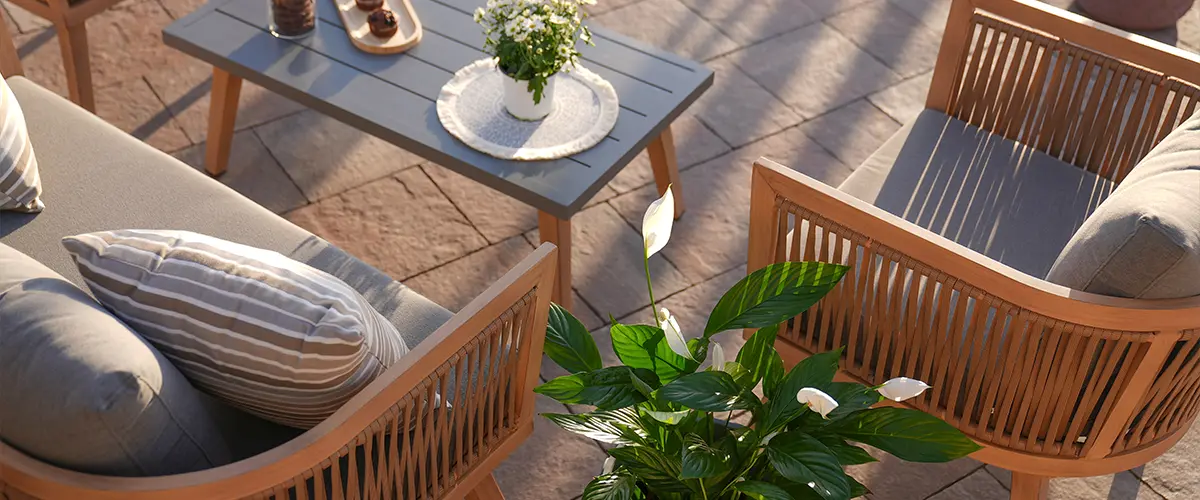
How to Protect Wood Patio Furniture
Protecting your wood patio furniture involves regular cleaning and applying a protective sealant. Regular maintenance is important to ensure the longevity of your outdoor furniture.
To know more about maintaining the vibrance of your outdoor furniture, read on!
Protecting wood surfaces
To protect wood surfaces, regularly clean outdoor furniture with a mild soap and water solution to remove dirt and grime. Apply a quality outdoor wood sealer or oil finish to protect against moisture, UV rays, and mold growth.
Inspect the furniture for any signs of wear or damage and perform regular maintenance as needed to prevent deterioration.
Use weather-resistant covers during inclement weather or when not in use to shield the wood from excessive moisture. Additionally, placing furniture on a patio rug can mitigate direct contact with damp ground.
Maintaining vibrance
To maintain the vibrance of your outdoor furniture, regularly clean it with a mild soap and water solution. Apply a protective finish or sealant to shield the wood from UV rays and moisture.
Keep your furniture covered during inclement weather to prevent fading and warping. Sand any rough patches and reapply finish as needed to keep the wood looking fresh.
By taking these simple steps, you can ensure that your outdoor furniture remains vibrant for years to come. Choosing the right maintenance routine will prolong its life and preserve its beauty, allowing you to enjoy the natural elegance of your wooden furniture in any season.
Choosing the Best Wood for Your Outdoor Furniture
- Budget
When considering the budget for outdoor furniture, it’s essential to evaluate the initial cost of the wood and any potential long-term savings. Teak is known for its durability and weather resistance but tends to be on the higher end in terms of cost.
Acacia offers a more affordable option without compromising too much on quality, making it suitable for those looking for a balance between affordability and longevity in their outdoor furniture.
Factors such as maintenance requirements and lifespan should also be weighed against the upfront costs when determining which wood best suits your budget.
It’s crucial to find a wood that aligns with your financial considerations while still meeting your expectations for outdoor furniture longevity and aesthetics.
- Climate
Different types of wood react differently to varying climates. When choosing the best wood for your outdoor furniture, consider the climate in your area. Some woods are better suited to withstand moisture and high humidity, making them ideal for areas with frequent rain or extreme weather conditions.
Others may be more prone to warping or rotting in certain climates, so it’s important to choose a wood that can handle the specific weather patterns in your region. Consider the durability and natural resistance of each type of wood when making your decision.
- Patio surface
When considering the best wood for your outdoor furniture, the patio surface plays a crucial role in decision-making. Hardwood and dense woods like teak or cedar are suitable for all types of patios, including concrete, stone pavers, or even grassy areas.
On the other hand, softer woods such as eucalyptus may be better suited to covered patios or areas with less foot traffic.
The climate and exposure to elements should also dictate your choice: for instance, teak is resilient to moisture and insects but needs regular maintenance on uncovered surfaces. Conversely, acacia can withstand various climates but should ideally be placed under cover to prolong its lifespan.
- Longevity
Different types of wood offer varying degrees of durability when used for outdoor furniture. Factors such as resistance to rot, weathering, and insect damage affect the longevity of the furniture.
Teak is known for its exceptional longevity due to its natural oils that protect it from moisture and decay. Cedar also boasts impressive longevity, thanks to its natural resistance to rot and insects.
On the other hand, redwood is naturally resistant to decay and has a long lifespan when properly maintained.
When considering which wood is best for your outdoor furniture, take into account the climate in your area and the level of maintenance you’re willing to commit to in order to ensure its long-term durability.
- Features and maintenance requirements
To ensure your outdoor furniture stays in top condition, it’s vital to understand the features and maintenance requirements of different wood types. Regular cleaning with a mild soap solution and water is essential to prevent dirt buildup on your wooden furniture.
Applying a protective finish like varnish or sealant every few years will help extend its lifespan by shielding it from the elements. A quick sanding before reapplying the finish can keep the surface smooth and splinter-free, ensuring your outdoor oasis remains inviting for years to come.
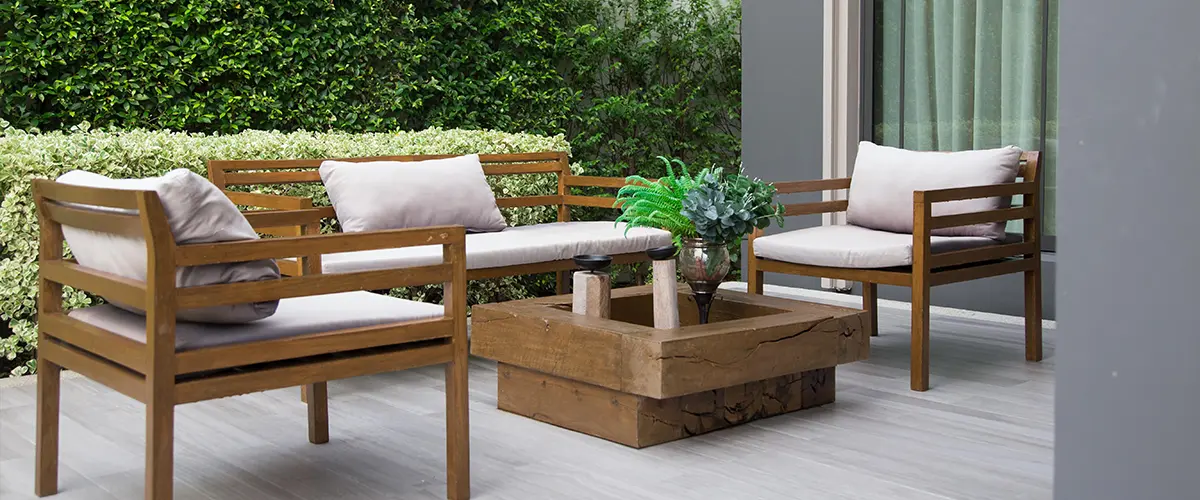
Choosing the Perfect Wood for Your Outdoor Furniture
As our journey through the forest of outdoor furniture options concludes, we hope you feel equipped with the knowledge to make a decision that resonates with your personal oasis.
At Farrell’s Lawn and Garden Center, we believe in the beauty of crafting spaces that are not only a feast for the eyes but sanctuaries that stand the test of time.
Remember, the choice of wood for your outdoor furniture is a declaration of your style and a commitment to the memories you’ll create in your outdoor space.
FAQs
Ready to transform your garden into an enchanting escape?
Visit Farrell’s Lawn and Garden Center today and let us help you choose the wood that will shape your outdoor legacy. Because every garden deserves to be a masterpiece. Contact us at (419) 636-5429!
